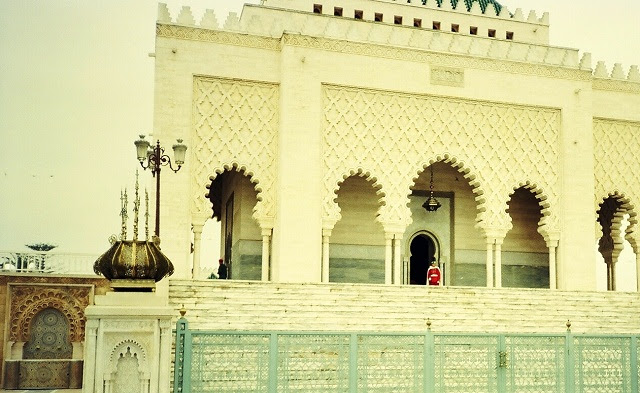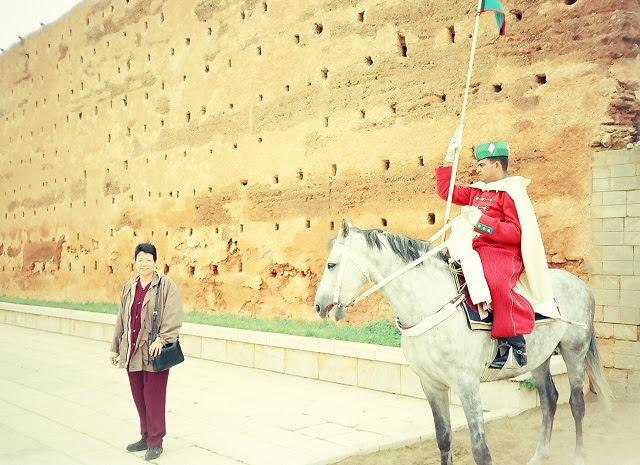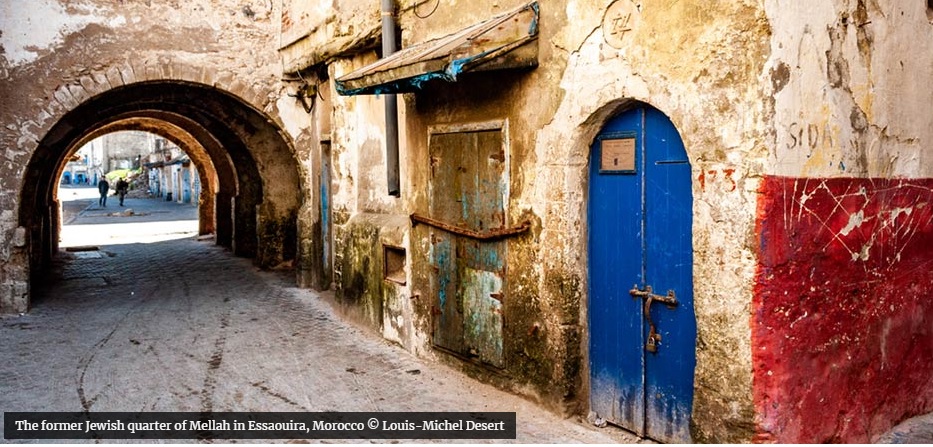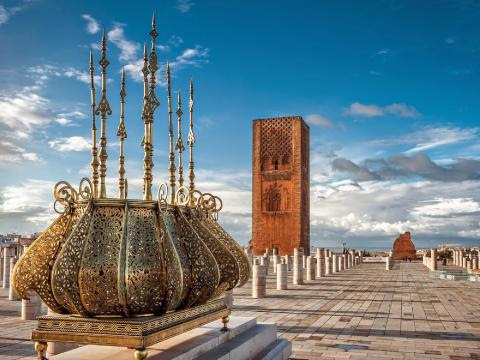GMA News
by ALICE SUN-CUA
Rabat and Casablanca
On a weeklong trip to Morocco with a Spanish group, one of the highlights was a visit to the imperial capital of Rabat, which literally meant “fortified convent.” Because of its strategic location by the Atlantic Ocean, Rabat’s history is filled with conquering tribes and foreign invasions. One of its more colorful characters was Sultan Moulay Ismail, who raided many passing ships; his lair lay in the estuaries and coves of the Bou Regreg River that ran through Rabat.
But that was centuries ago. Today, Rabat is a bustling, cosmopolitan city that made me think of Paul Bowles’ book, “The Sheltering Sky.”
My husband Alex and I first went to Victory Avenue, to the Mélchouar Precinct, to view the Dar el-Makhzen, the Royal Palace. We stood in front of its façade in awe of its beautiful gateway – an arched doorway with flowery arabesque, delicate embellishment, and carved designs.

Traditional keyhole arches and filigreed walls greet visitors to the mausoleum of King Mohammad V
A coach ride brought us to the mausoleum of King Mohammad V, who led Morocco’s independence movement. The royal resting place, which also contains the mortal remains of the king’s sons, Prince Abdallah and King Hassan II, was an imposing edifice, almost square with traditional keyhole arches and exquisitely filigreed walls. It had a white and green roof, green being the color of Islam. A large but delicate copper urn on one side greeted visitors. The king’s tomb was in an inner room where a Koran reader recited the prayers continuously.
Just outside, facing the mausoleum, was the centuries-old Hassan Tower. In 1195, Sultan Yacoub el-Mansour, the Almohad dynasty ruler who won a war against Spain, started to build what was supposed to be the largest mosque in the Muslim world, to rival the Giralda in Spain and the Kotoubia in Marrakesh. The walls of the minaret were of red sandstone, with intricate carvings. But the sultan suddenly died, and the minaret reached only 44 of the intended 60-meter height.
About 200 supporting columns and parts of the walls, all unfinished, dot the Yacoub el-Mansour Esplanade where the antique mosque stood. Some of the walls fell into ruins, especially after an 18th century earthquake. Smart-looking Moroccan guards on Arab horses, in their red and green uniforms and white capes, watched over the area, holding aloft the national flags.

A Moroccan guard watches over the centuries-old structures at the Yacoub el-Mansour Esplanade
Further on we saw a huge walled-in area, and discovered that it was the Kasbah el-Oudaia, considered the ancient medina (traditional Arabic part of town). It housed a large Jewish population at around the 1400s, and now contained an anthropological museum. Going around we enjoyed the white-washed houses with large splashes of blue in their walls, blue being the color of Judaism. The fresh flowers and the white walls reminded us of Andalusia, the southern region of Spain.
With our guide Ismail, we stood on a hill overlooking the Bou Regreg River, an estuary where the ocean waters entered the city. He told us stories about how the corsairs of yore hid along these coves in the bay, to lie in wait for their prey, usually ships carrying valuable goods and even slaves. Later, an afternoon in the souqs tempted us with exquisite silver handicraft.
The next day we traveled the short distance between Rabat and Casablanca. “You must remember this/ a kiss is just a kiss…” This popular song was running through my mind as we neared Casablanca. Its very name brought to mind a windswept, lonely airport where Rick (Humprey Bogart) and Ilse (Ingrid Bergman) were saying goodbye, and the famous place where they met: Rick’s Café Americain, the popular piano bar, in the very heart of town. The song was one of my favorites, and the movie too, so it had been a dream to come and see this bar where the star-crossed lovers exchanged whispered promises amid the dark clouds of WWII.
This time our Moroccan guide was Azizah, who warned us not to expect the café to still exist, lest we got disappointed. This was greeted by a loud groan from everyone, followed by much laughter. We reached the center of town, and true enough, what used to be the site for the movie’s café was now the space between a Hyatt Hotel and another building.
What Casablanca had to offer though, was more interesting: the Hassan II Mosque with its beautiful minaret, considered the tallest religious structure in the world at 210 meters. The tower itself was ivory-colored, with green and turquoise arabesque and mosaic trimmings. At the top of the minaret was a laser beam that could reach 30 kilometers, and the light was always directed towards Mecca.
Even before entering, we were amazed at the delicate Moorish archways, the mosaic and colored tiled decorations on the walls, and the wide, spacious grounds. Non-Muslims were allowed to enter (unlike other mosques in the country) after paying 100 dirhams as a “purification fee.” We had to remove our shoes, and on stockinged feet we padded around to gasp at the incredibly fine, ornate carvings on archways, walls, and pillars. Because the floors were heated, it was comfortable even without our shoes.
The prayer hall had undulating ceilings and walls, with Murano chandeliers and a retractable roof. Thus at daytime, sunlight could warm the devotees, and at night time they could pray with the stars in the sky. A mezzanine floor was provided for the women, so they too, could join the prayers. We peeked through the hammams, the area where devotees could wash themselves, and even take a shower or enjoy a sauna.
Two years later, Azizah wrote me, saying that an American diplomat had put up a piano bar-restaurant called Rick’s Café, near the walls of the old medina. The decor was that of Casablanca, the movie, and an authentic 1930s piano was installed. And yes, almost every night they played, what else, “As Time Goes By.” –YA, GMA News



